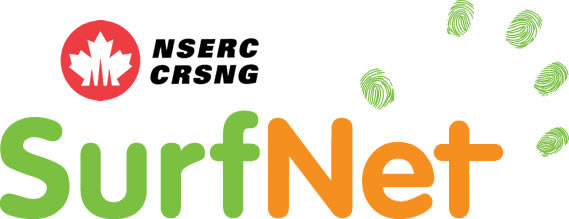Creating a Playful Exploratory Search Environment for Alice Munro’s Literary Legacy
The opportunity for this project arose from the TFDL’s response to a previous project – the Bohemian Bookshelf (BB) 1. The Bohemian Bookshelf explored the potential of using interactive visualizations to support serendipitous discoveries in search. The TFDL library has recently been bequeathed with Nobel Laureate Alice Munro’s papers, letters, and writings. The UofC feels that this is a tremendous honour and also a responsibility to make these papers more generally available. Based on their appreciation of the interface of the BB, we have been asked to create an interface for Alice Munro’s papers.
While the Bohemian Bookshelf triggered this request, the actual development of an interface for Alice Munro’s papers, will involve entirely new research. BB is a small proof of concept project. It offers an interface for 300 books, which is a completely homogeneous data set where each book is independent and has exactly the same data attributes. In contrast, this new collection is heterogeneous being composed of such things as letters, drafts of stories, notes and musings, as well as published stories. Some of these will be fully digitized as searchable text, others will be scanned and available as images, and some will have both text and scanned versions. Also attributes and meta-data will vary considerably from item to item. Additionally, the relationships between items in the collection are of as much or more interest than the items individually. Thus creating an interface for the Alice Munro collection will involve:
-
Developing entirely new visualizations for the individual items.
-
Developing visualizations that reveal inter-item relationships.
-
Creating appropriate and combatable interactions for these visualizations.
-
Focusing on visualizing the content, rather than relying solely on well-kept meta
data.
Prior research has shown that in our physical world, people engage in a wide spectrum of diverse search strategies many of which are non-targeted and have less articulated goals such as browsing, “berry picking” and open-ended explorations. These exploratory search strategies are often applied when the search target is not yet clearly defined; giving people the opportunity to build their knowledge about a broader topic, letting people gain an overview of the available information and making it possible to define specific information needs. Exploration can be considered an integral part of information seeking. However, current technology heavily favours targeted search, which is only one part of the complex interplay of different search strategies that form the full spectrum of people’s information seeking behaviour.
In this research, we will examine the opportunities for expanding interactive support for exploratory search in order to better support information discovery. We will (1) tackle the issue of scale by exploring possibilities of information overviews may offer, (2) investigate the integration targeted and non-targeted search within a single interactive interface, (3) consider the use of exploratory search as applied in different scenarios and to different data sets to search for generalizable concepts and guidelines. One goal of this research supporting researchers from various disciplines who are studying Alice Munroe’s body of work in exploring her personal writings that might be harder to access by using common search queries while also making this unique collection accessible for the general public to explore.
During the development of this interface, we will work in close collaboration with librarians and literary scholars to better understand use of this data and the types of tasks they envision. Additionally, we have the ideal setup for an installation in a real world situation at the library. This will give us the opportunity to conduct long-term observations of people’s interactions with the application. The goal of this step is to better understand whether we achieved playful search, and to start to identify what factors in the interface contribute to this.



